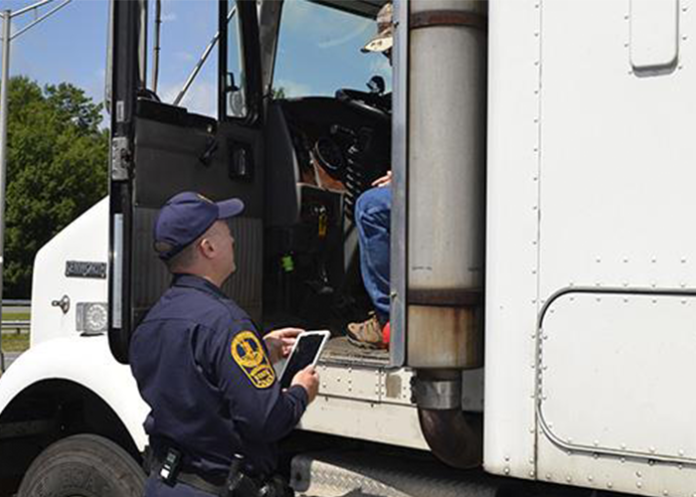Today the Commercial Vehicle Safety Alliance (CVSA) announced the dates and area of focus for this year’s International Roadcheck inspection campaign.
On January 27, the CVSA announced that International Roadcheck 2020 will take place May 5 — 7 throughout North America.
The CVSA also said that this year’s area of emphasis will be on “driver requirements.” The CVSA points to Federal Motor Carrier Safety Administration (FMCSA) data that shows that in 2019, 3.36 million CMV inspections were conducted and during these inspections , 944,794 driver violations were discovered, of which 195,545 were out-of-service conditions.
During Roadcheck, most drivers will undergo the North American Standard Level I Inspection.
The CVSA details the Level I Inspection procedure:
An inspector will start each inspection procedure by greeting, interviewing and preparing the driver. The inspector will collect and verify the driver’s documents, identify the motor carrier, examine the driver’s license or commercial driver’s license, check record of duty status and review periodic inspection report(s). If applicable, the inspector will check the Medical Examiner’s Certificate, Skill Performance Evaluation Certificate and the driver’s daily vehicle inspection report. Inspectors will also check drivers for seat belt usage, illness, fatigue, and apparent alcohol and/or drug possession or impairment.
The vehicle inspection includes checking critical vehicle inspection items such as: brake systems, cargo securement, coupling devices, driveline/driveshaft components, driver’s seat (missing), exhaust systems, frames, fuel systems, lighting devices, steering mechanisms, suspensions, tires, van and open-top trailer bodies, wheels, rims and hubs, and windshield wipers. Additional items for buses, motorcoaches, passenger vans or other passenger-carrying vehicles include emergency exits, electrical cables and systems in engine and battery compartments, and temporary and aisle seating.
If no critical vehicle inspection item violations are found during a Level I or Level V Inspection, a CVSA decal will be applied to the vehicle, indicating that the vehicle successfully passed a decal-eligible inspection conducted by a CVSA-certified inspector. However, if a required rear impact guard is inspected during a Level I or Level V Inspection and violations are present, a CVSA decal will not be issued.
If an inspector does identify critical vehicle inspection item violations, he or she may render the vehicle out of service if the condition meets the North American Standard Out-of-Service Criteria. This means the vehicle cannot be operated until the vehicle violation(s) are corrected. A driver can also be placed out of service for driver credential-related issues or driver conditions, such as fatigue or impairment.
“With last year’s federal electronic logging device full-compliance mandate in the U.S., the Alliance decided that this year’s International Roadcheck would be the perfect opportunity to revisit all aspects of roadside inspection driver requirements,” said CVSA President Sgt. John Samis with the Delaware State Police.
The CVSA elected to conduct Roadcheck earlier this year, hoping that most of the inspections will take place in more favorable weather than in early June, when Roadcheck usually occurs.
Sgt. Samis added, “We’re aware that some drivers opt to stay off roadways during the three days of International Roadcheck. Although there is certainly an increase in the number of inspections conducted during International Roadcheck, it’s important to remember that inspections are conducted every day of the year. Inspectors will be inspecting commercial motor vehicles the day before International Roadcheck starts, the day after it ends, as well as any other day of the year.”
